I'm getting stuck with the D3.js v4's animation of both line & area:
- It's ok to do the animation separately for line & area
- When 2 animations are combined, even at the same transition duration, they do not occur together.
- For the reason of styling, I cannot drop the line away.
To make thing like above, I do 2 big steps:
- Do animation for line via setting the properties
stroke-dasharrowandstroke-dashoffset. (Inspired from Visual Cinnamon) - Do animation for area via tweaking parameters for d3.area() function (Inspired from other Stackoverlfow post)
The result is rather disappointing because line and area underneath do not appear in parallel.
My target is to mimic the Highchart library, see an example here, and its illustration below:
It seems the Highchart library uses a different animation technique, because during DOM inspection, there is no sign of any change for the DOM paths along the animation.
Appreciated if anyone could suggest me some ideas to experiment with.
My code sample is below:
let animationDuration = 5000;
// set the dimensions and margins of the graph
var margin = { top: 20, right: 20, bottom: 30, left: 50 },
width = 480 - margin.left - margin.right,
height = 250 - margin.top - margin.bottom;
// parse the date / time
var parseTime = d3.timeParse("%d-%b-%y");
// set the ranges
var x = d3.scaleTime().range([0, width]);
var y = d3.scaleLinear().range([height, 0]);
// define the area
var area = function (datum, boolean) {
return d3.area()
.y0(height)
.y1(function (d) { return boolean ? y(d.close) : y(d.close); })
.x(function (d) { return boolean ? x(d.date) : 0; })
(datum);
}
// define the line
var valueline = d3.line()
.x(function (d) { return x(d.date); })
.y(function (d) { return y(d.close); });
// append the svg obgect to the body of the page
// appends a 'group' element to 'svg'
// moves the 'group' element to the top left margin
var svg = d3.select("body").append("svg")
.attr("width", width + margin.left + margin.right)
.attr("height", height + margin.top + margin.bottom)
.append("g")
.attr("transform",
"translate(" + margin.left + "," + margin.top + ")");
var data = d3.csvParse(d3.select("pre#data").text());
data.reverse();
// format the data
data.forEach(function (d) {
d.date = parseTime(d.date);
d.close = +d.close;
});
// scale the range of the data
x.domain(d3.extent(data, function (d) { return d.date; }));
y.domain([0, d3.max(data, function (d) { return d.close; })]);
// add the area
svg.append("path")
.data([data])
.attr("class", "area")
.attr("d", d => area(d, false))
.attr("fill", "lightsteelblue")
.transition()
.duration(animationDuration)
.attr("d", d => area(d, true));
// add the valueline path.
svg.append("path")
.data([data])
.attr("class", "line")
.attr("d", valueline)
.style("stroke-dasharray", d => {
let path = document.querySelector(".line");
const totalLength = path.getTotalLength();
return `${totalLength} ${totalLength}`;
})
.style("stroke-dashoffset", d => {
let path = document.querySelector(".line");
const totalLength = path.getTotalLength();
return `${totalLength}`;
})
.transition()
.duration(animationDuration)
.style("stroke-dashoffset", 0);
// add the X Axis
svg.append("g")
.attr("transform", "translate(0," + height + ")")
.call(d3.axisBottom(x));
// add the Y Axis
svg.append("g")
.call(d3.axisLeft(y));.line {
fill: none;
stroke: steelblue;
stroke-width: 2px;
}
pre#data {display:none;}<script src="https://d3js.org/d3.v4.min.js"></script>
<pre id="data">
date,close
1-May-12,58.13
30-Apr-12,53.98
27-Apr-12,67.00
26-Apr-12,89.70
25-Apr-12,99.00
24-Apr-12,130.28
23-Apr-12,166.70
20-Apr-12,234.98
19-Apr-12,345.44
18-Apr-12,443.34
17-Apr-12,543.70
16-Apr-12,580.13
13-Apr-12,605.23
12-Apr-12,622.77
11-Apr-12,626.20
10-Apr-12,628.44
9-Apr-12,636.23
5-Apr-12,633.68
4-Apr-12,624.31
3-Apr-12,629.32
2-Apr-12,618.63
30-Mar-12,599.55
29-Mar-12,609.86
28-Mar-12,617.62
27-Mar-12,614.48
26-Mar-12,606.98
</pre>
